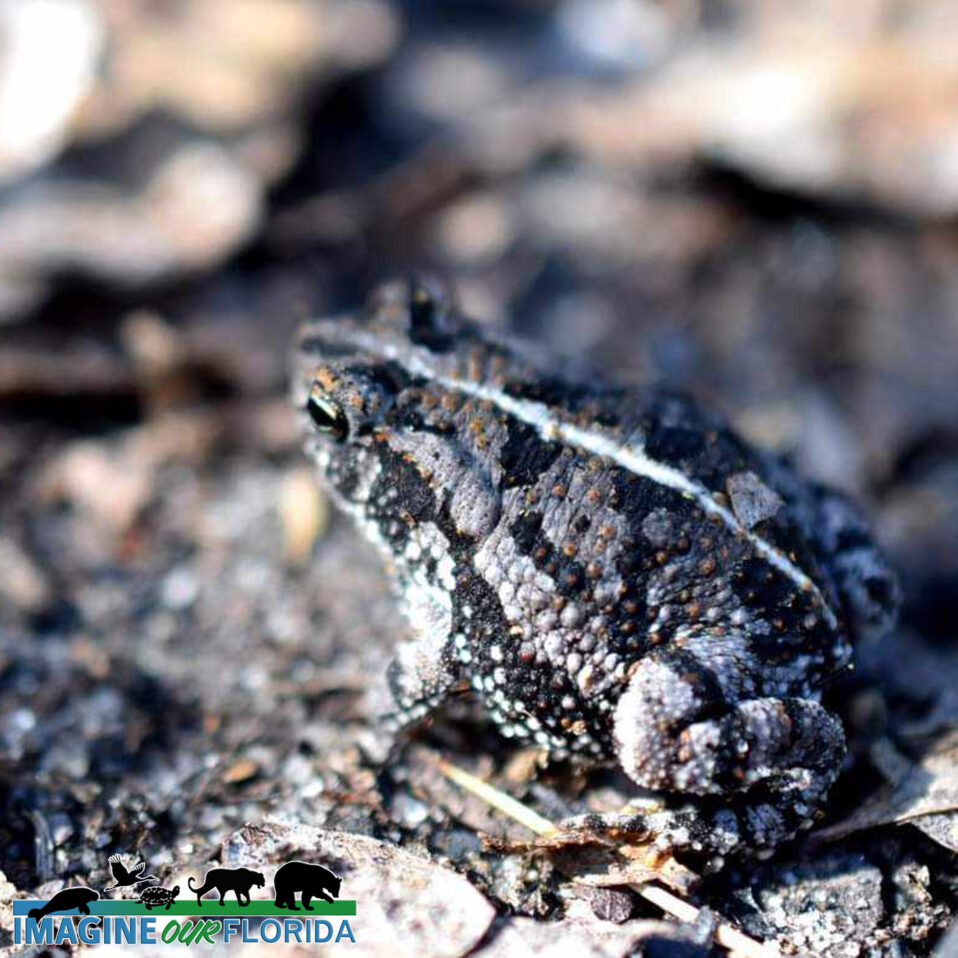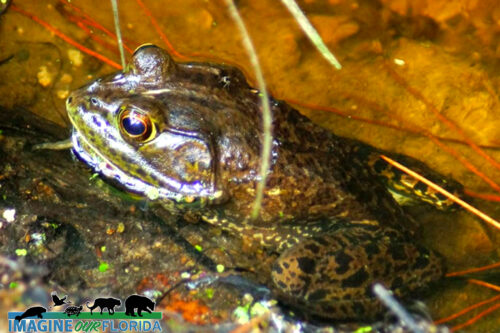Oak Toad
American Bullfrog
Cane Toad
The Cane Toad (Rhinella marina) is an invasive species. Native to Central and South America, it was released in Florida in the 1930s-1940s to control sugar cane pests.
Cane toads grow to between 4 to 6 inches. Their coloration ranges between tan, brown, reddish-brown to gray. The skin is warty and the back is marked with dark spots. They do not have ridges or crests like the native southern frog. They do, however, have large triangle-shaped parotoid glands, which appear prominently on the shoulders. Breeding takes place from March to September along vegetated, freshwater areas and they lay their eggs in a long, string line, like native toads.
Cane toads are predominantly found in Central and South Florida. They can be found in urban areas as well as agricultural areas, flood plains, and mangrove swamps.
Cane Toads prey on anything that fits in their mouths. Unfortunately, their prey often consists of native frogs, lizards, snakes, and small mammals.
Toxin from a cane toad can irritate a human’s skin and eyes. If a pet bites or swallows a cane toad, they will become sick and the toxin may be fatal. FWC states, “A cane toad’s toxin can kill your pet in as little as 15 minutes without proper treatment. If your pet bites or licks a cane toad, it will likely start acting strangely with frantic or disoriented behavior. It may also have brick-red gums, seizures, and foam at the mouth.”
FWC recommends “If you see these symptoms and believe your pet licked or bit a toad, immediately wash toxins forward out of the mouth using a hose for 10 minutes, being careful not to direct water down the throat. Wipe the gums and tongue with a dish towel to help remove the toad’s milky, white toxins that will stick to your pet’s mouth. Once you have done this, get your pet to a veterinarian as quickly as possible.”
Keep your cats indoors and your dogs close by when you take him or her outside.
FWC offers these tips to make your yard less attractive to cane toads:
- Cut your grass regularly and keep it short.
- Fill in any holes around structures.
- Trim the underside of shrubs and keep branches off the ground.
- Clear away brush piles and remove clutter.
- Feed pets indoors when possible and bring outdoor pet food and water bowls indoors at night.
- Clean up any food scraps from pet bowls or outside tables and grills.
For more info, click here: https://
Little Grass Frog
The Little Grass Frog (Pseudacris ocularis), is the smallest of frogs. They are only 1/2 an inch long and range in color from light beige to dark brown and tan. They have dark eye strips extending along the side of the body and thin white strips above the lip and below the eye. Their pads are tiny and their long toes are slightly webbed. Despite the frog’s size, The Little Grass Frog can jump 20 times its body length.
The Little Grass Frog will lay between 1 to 25 creamy brown eggs on vegetation or submerged debris. The eggs hatch in less than 2 days. From tadpole to frog, metamorphosis lasts only 10 days.
Look for the Little Grass Frog in wet prairies and flooded grassy meadows. They are active during the day and can be found climbing among the grasses.
Listen for The Little Grass Frog’s high-pitched chirp in grassy areas. It is difficult to hear. If you hear the chirping, it is usually at night when the humidity is high or when it is raining.
To hear the Little Grass Frog call go to:
https://srelherp.uga.edu/anurans/sounds/pseocu.mp3
Eastern Spadefoot Toad
This is an Eastern Spadefoot Toad (Scaphiopus holbrookii). This little guy has recently cast off his tail and emerged as a little toad. It will now spend most of its life burrowed underground, primarily emerging only after explosive, heavy rains.
When Hurricane Irma passed through Florida, many saw only destruction. For many species, the hurricane was the perfect setting for reproduction. These toads emerge by the thousands and breed in the temporary pools of water that form in the forests after such weather events. These pools have no fish in them to prey on eggs and tadpoles. The rainfall associated with hurricanes can result in millions of tiny spadefoot toads coating the forest floor before finding their way into the forest and burrowing down into the sandy soil.
What have you seen this week as you saunter through Florida?












Recent Comments